By: Amelia Chen
As a freshman, I started every day the same way. Two hardboiled eggs and two Morningstar sausage patties with a healthy drizzle of Sriracha. At the time I was still a vegetarian. I had a friend in middle school who slowly convinced me to adopt a vegetarian lifestyle. I began by cutting out chicken because it was the easiest for me to give up. Beef was a bit more difficult but not impossible. Pork was rough because, as the favored meat amongst my family, I grew up craving all things pork. So needless to say, I didn’t expect my cravings to be mostly satisfied by the meat analogs available to me. It helped that I also enjoyed tofu in all its forms, and we already used seitan, a wheat gluten product, in place of pork in some dishes. Hydrolyzed vegetable protein and autolyzed yeast extract became my favorite ingredients.
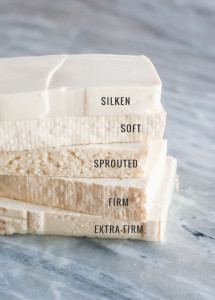
Different types of Tofu courtesy of vegafoods.com
But the landscape of meat substitutes is rapidly changing, as more and more companies that offer better meat substitutes are popping up. And the most inspiring thing to me is the available technology that allows innovators and enthusiasts and carnivores and vegetarians to start changing the way we see meat and other animal products. It used to be that the vegetarian option would just be a shaped flavored soy conglomerate with ketchup and mustard on the side. Now, not only do they resemble meat in appearance and texture (Beyond Meat), but also a larger variety of vegetable proteins is being explored for their functional uses (Hampton Creek, Impossible Foods) and the original proteins are being produced using new techniques (Clara Foods, Gelzen Inc, Muufri).

Image courtesy of Beyond Meat
I was introduced to Beyond Meat at my first IFT conference in 2013 in the Day in the Life of a Food Scientist feature. It was the first time I noticed meat analogs again after converting back from vegetarianism. They use an extrusion process that knits plant proteins and fibers together in a specific physical arrangement that allows the final structure to tear like meat. Texture was always the biggest hurdle for me. “Tender” means two different things when talking about carrots versus chicken breast, and it just didn’t seem possible for vegetable protein conglomerates to successfully mimic animal protein. In Beyond Meat’s process, proteins and the right amount of water are mixed in twin screw extruders before going through the extruder long slit cooling die where molecular realignment results in a fibrous muscle-like structure.
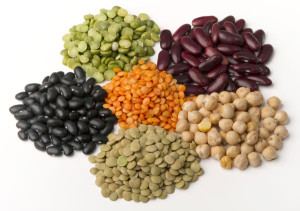
At that point my imagination didn’t run any further than chicken. Now Dr. Patrick O. Brown, founder and CEO of Impossible Foods, is amongst several others at the frontier of non-meat products for meat-lovers. As a vegan, Brown realized making meat directly from plants that would be better for the environment. Impossible Foods was the first company to extract specific proteins from vegetables, fruits, grains, and legumes and mixing them with amino acids, vitamins, and fats to make “raw meat” through reverse engineering. Using plant proteins allows them to leave out cholesterol, hormones, antibiotics, and slaughterhouse contaminants. They aim to create a plant-based burger that replicates the initial visual appearance of raw meat (including “blood” using heme molecules), the sizzle and aromas during cooking, and the final taste and texture.
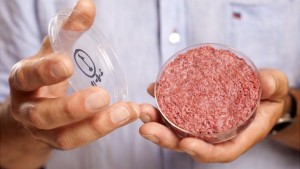
Image courtesy of the BBC
Options will not be lacking for converted vegans either. Several companies are rethinking eggs and dairy products on a molecular level. You’ve probably heard of test tube burgers – well, now we can look forward to test tube egg whites, gelatin, and milk. Don’t let the sound of “test tube” food turn you off to the idea though. These companies are utilizing the molecular technologies that we already use in medical and pharmaceutical settings and adapting them to find a solution to feeding a growing population in a sustainable and healthy manner. Muufri aims to produce animal-free milk using yeast to make the essential proteins found in natural cow’s milk. The founder, Ryan Pandya, a converted vegan, conceived of the idea while eating a disappointing bagel with vegan cream cheese, which was held together by gums and fillers and lacked the protein content and taste of regular cream cheese.
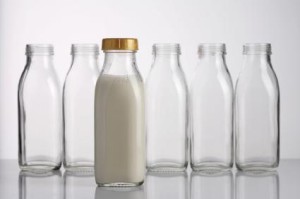
Image courtesy of Pinterest
At the time Pandya was working at the University of Massachusetts Medical School where he was “basically teaching [immune] cells to behave like other cells,” and it occurred to him that the the same could be done to make cells that behave like udder cells. Now, by being able to make milk building from the bottom-up, Muufri is able to leave out the cholesterol and contaminants, as well as make a product for people with lactose intolerance or milk allergies. For products that are also widely used as ingredients, like milk, there’s also the question of how differently the engineered ingredient might function in traditional food applications. But the great thing about being able to build from the bottom up is that engineers can now pick and choose the best characteristics for a specific formulation, so Muufri aims to design their milk to be suitable in any dairy application.

Plants in laboratory glassware — Image by © Pulse/Corbis
Though I am excited by the current direction of animal-free substitutes, I can understand the hesitancy and skepticism, too. It’s hard to reconcile where the limit is in regards to manipulating our food. It’s even harder to change a carnivorous lifestyle if the alternative option costs more with the added risk of disappointment. To those points, Pandya argues that the line between “natural” and “unnatural” food is already blurred, as we’ve already tampered with much of how cows produce milk. And with production scale up, Impossible Foods expects to be a competitive option for meat lovers who want a sustainable meal without sacrificing the pleasures of eating meat. In the end, we are always looking for “better” ways to do things, so if there is a safer, healthier, more humane, and more environmentally friendly way to produce the foods we already enjoy, why not?
Note: Thank you to Impossible Foods and Muufri founder Ryan Pandya for their help and time in answering questions for this article.
References
Patent for Meat Analog Compositions and Process
https://www.google.com/patents/US20120093994
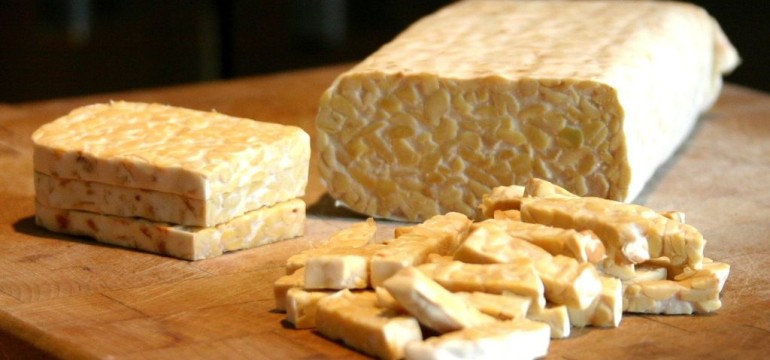





Also fun fact from Ryan: the VP of R&D from Beyond Meat joined Muufri as their CTO recently